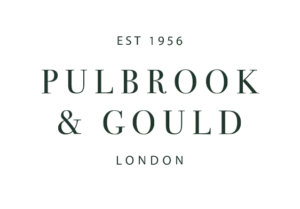Collecting with Gavin Morgan: Liberty’s captivating range of Tudric wares by Archibald Knox
Although Archibald Knox turned his hand to many aspects of design he is probably best known for his work for Liberty & Co and specifically for his designs for the Tudric pewter range that was introduced in 1902.
Knox was by no means the only designer for the range, with other designers including the likes of Oliver Baker, David Veazey and Rex Silver. There are many very accomplished pieces by these other designers but Knox was arguably the most successful and innovative of them all and usually this will rightly carry a premium.
Liberty & Co also produced pieces in silver as part of the Cymric range. The upper echelons of these can reach astronomical prices and here I will focus just on the pewter.

Gavin Morgan holding a clock by Archibald Knox.
There are several things to be wary of when collecting Knox pewter. The first and perhaps most obvious is whether it really is a Knox design. There is a tendency among less knowledgeable or less scrupulous sellers to claim any Tudric piece as Knox. Stephen A Martin’s excellent 1995 book Archibald Knox is a good starting point but in time one gets a feel for and can recognise his work instinctively.
Tudric pieces date to the 1920s with many of the later designs being rather plain and more traditional. Later pieces were adapted from or used elements of earlier designs, but these tend to be somewhat visually awkward and seemingly created by less accomplished designers. Each individual Tudric design has its own model number and most Knox designs have four-digit numbers.
Condition is extremely important for Tudric pieces. The modern taste is to have the pewter polished to return it to the condition in which it was originally sold. Failing to maintain pewter means it will eventually form a crust of oxidisation which needs to be chemically removed before polishing. This is not a job for amateurs so if you want polished pieces buy them already polished. The oxidisation can also hide pitting to the metal and even holes.
A modest piece of Knox pewter such as a napkin ring or pin tray can be bought for under £100, but there is a very wide range of prices up to many thousands of pounds. Strength of design, scale and rarity are important factors in determining value.
Another important factor is whether pieces are decorated with secondary materials such as enamel, abalone or stone cabochons. Expect to pay at least twice the price for an enamelled version of a model compared with a plain one. Always check the enamel has no major damage and has not been repaired with coloured resin, which I see fairly often.
An enamelled jug can be found for a few hundred pounds but more substantial enamel pieces in fine polished condition will probably cost in excess of £1,000.
Clocks are a particular field of interest and carry a premium. Whilst later 1920’s or very plain clocks can be bought for £1,000-2,000, prices for a good Knox model in working order can rise to £5,000-20,000 depending on the model.
At the pinnacle of Knox pewter can be found the Great Clocks, which are large scale and minimalist, but with perfect proportion and often decorated with inset abalone shell. These pieces were both very avant-garde and expensive and consequently are very scarce.
One of the beauties of Knox pewter is there is a piece to fit almost any pocket. Knox was a prolific designer and the Tudric range so large that even now, after more than 35 years of specialisation, I still see designs I have never seen before.





